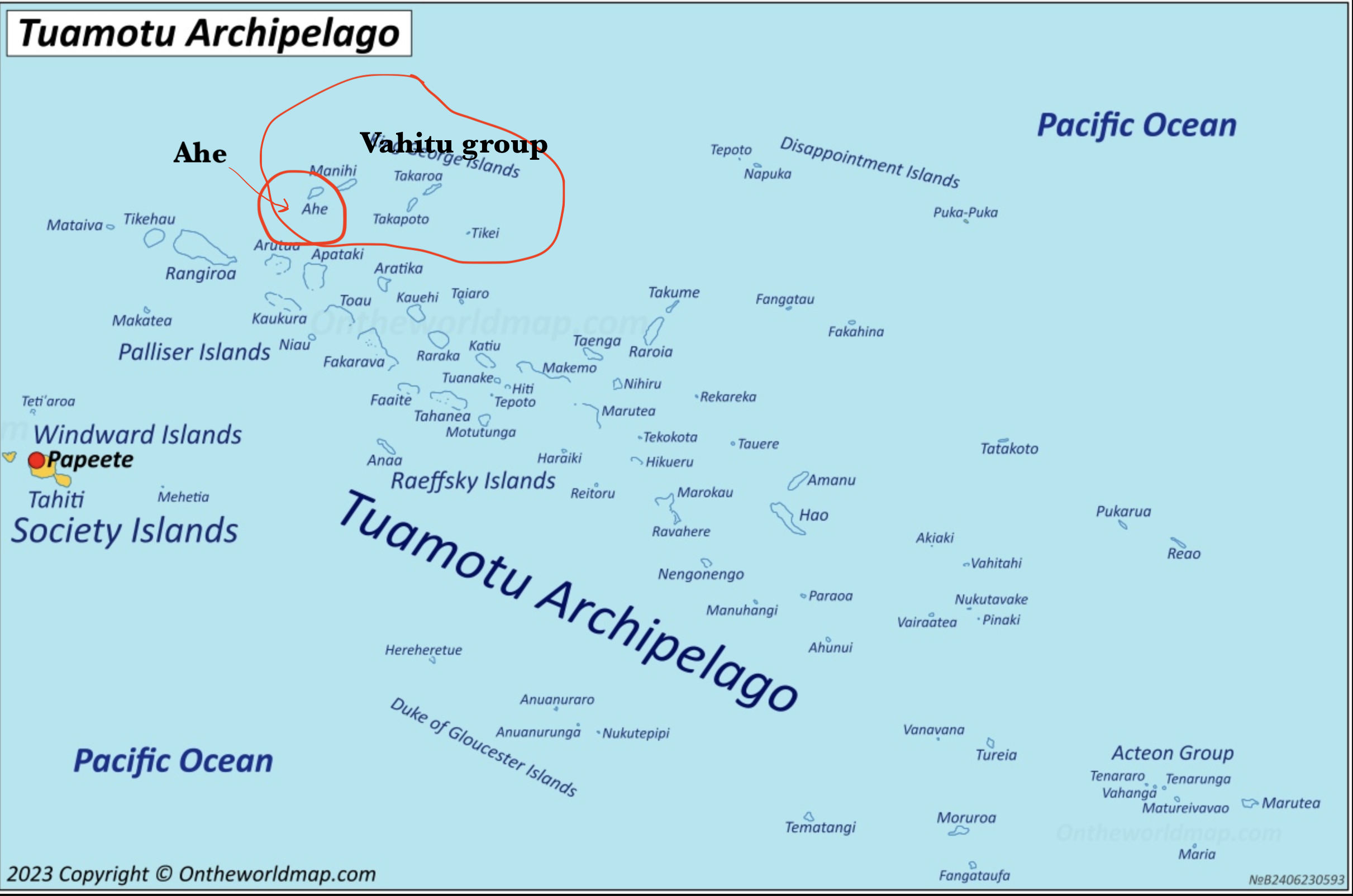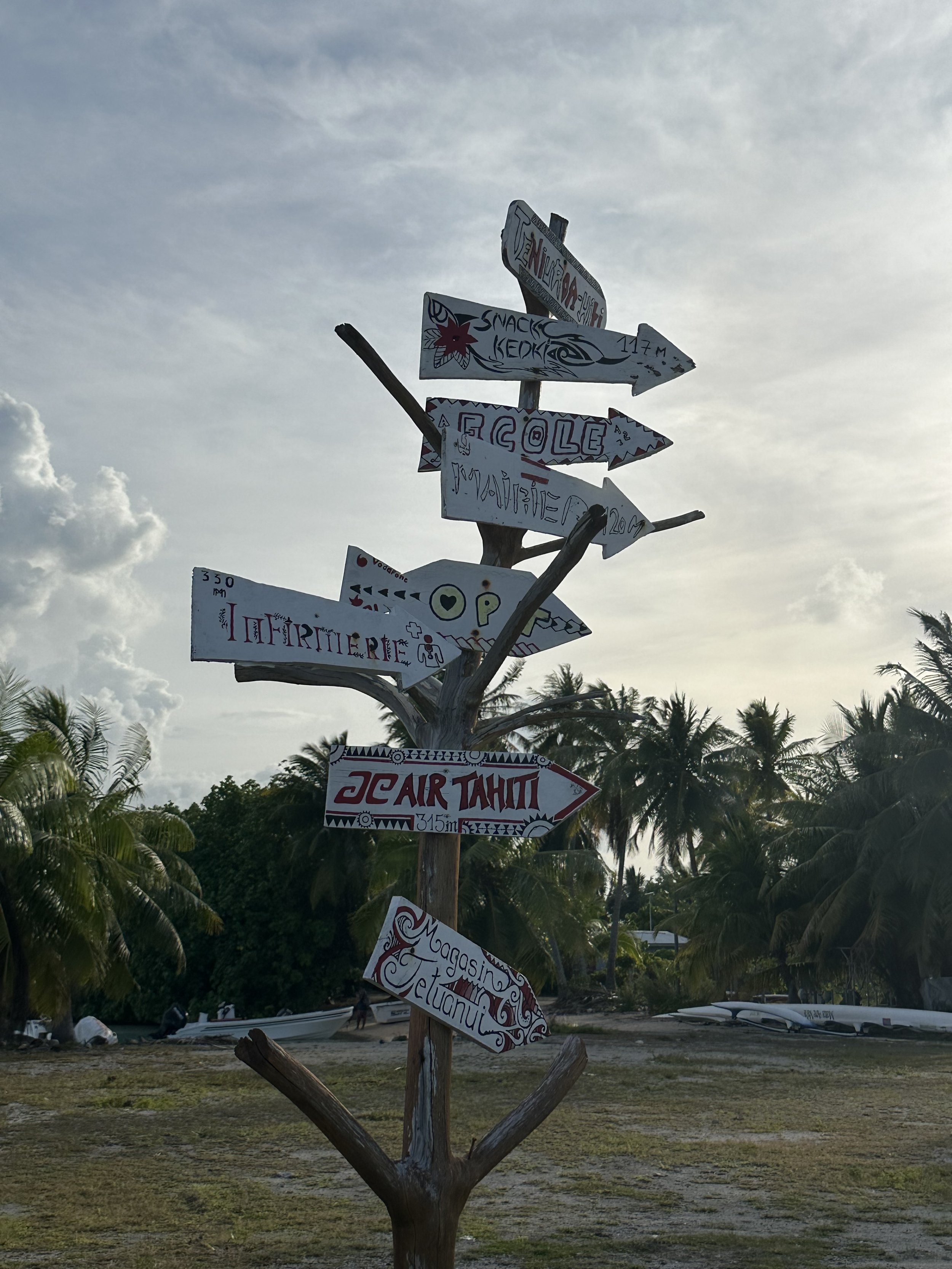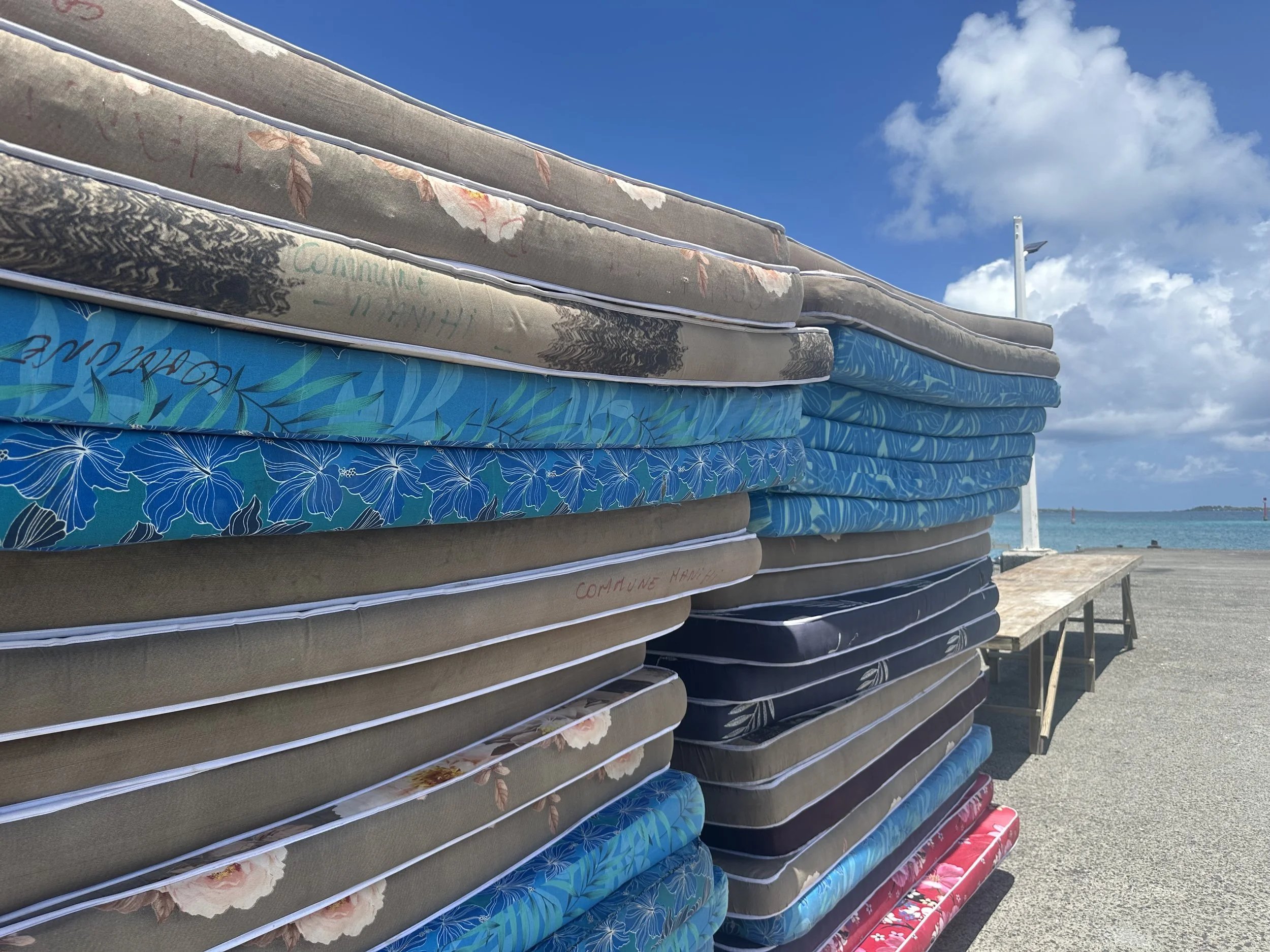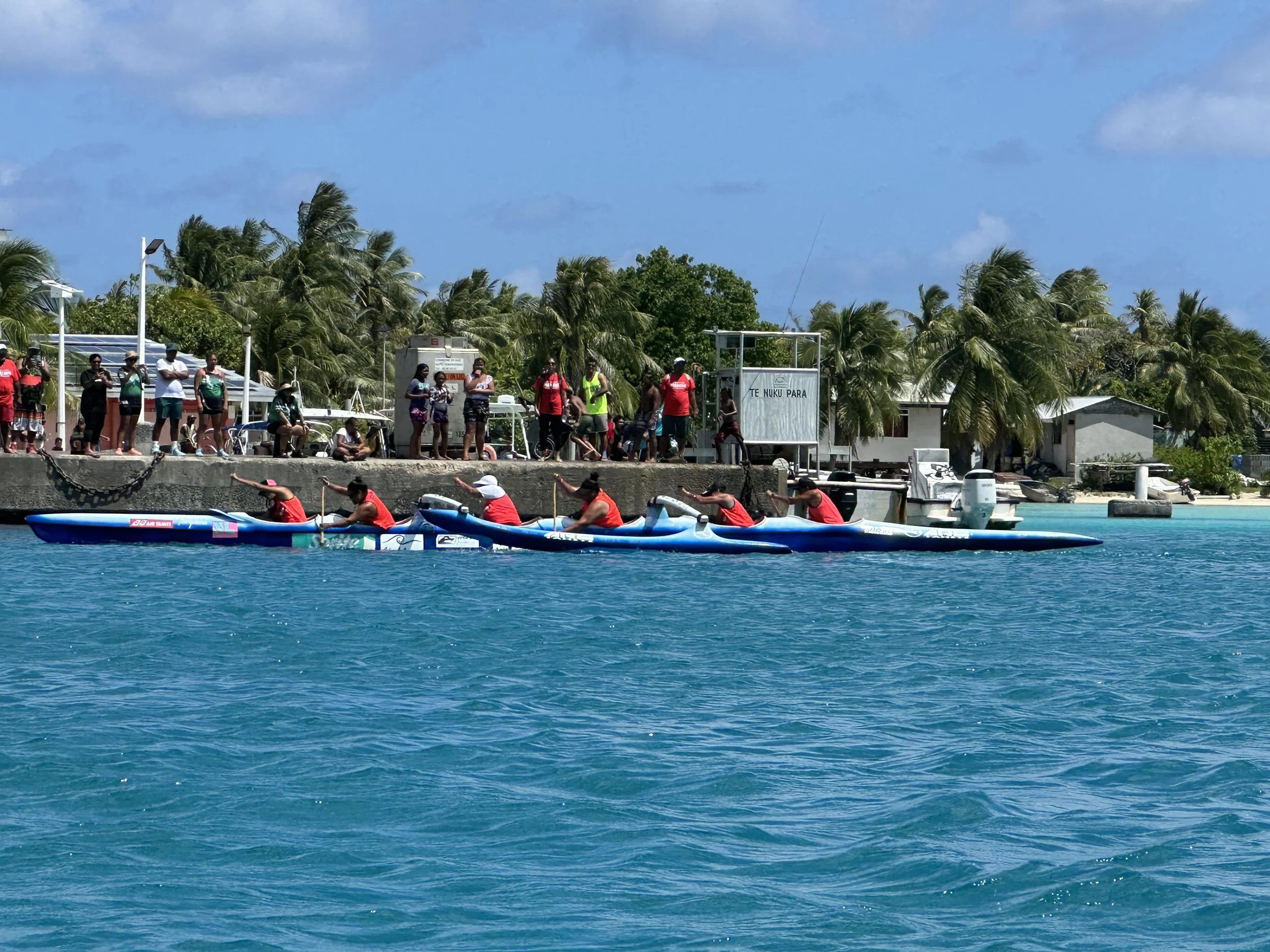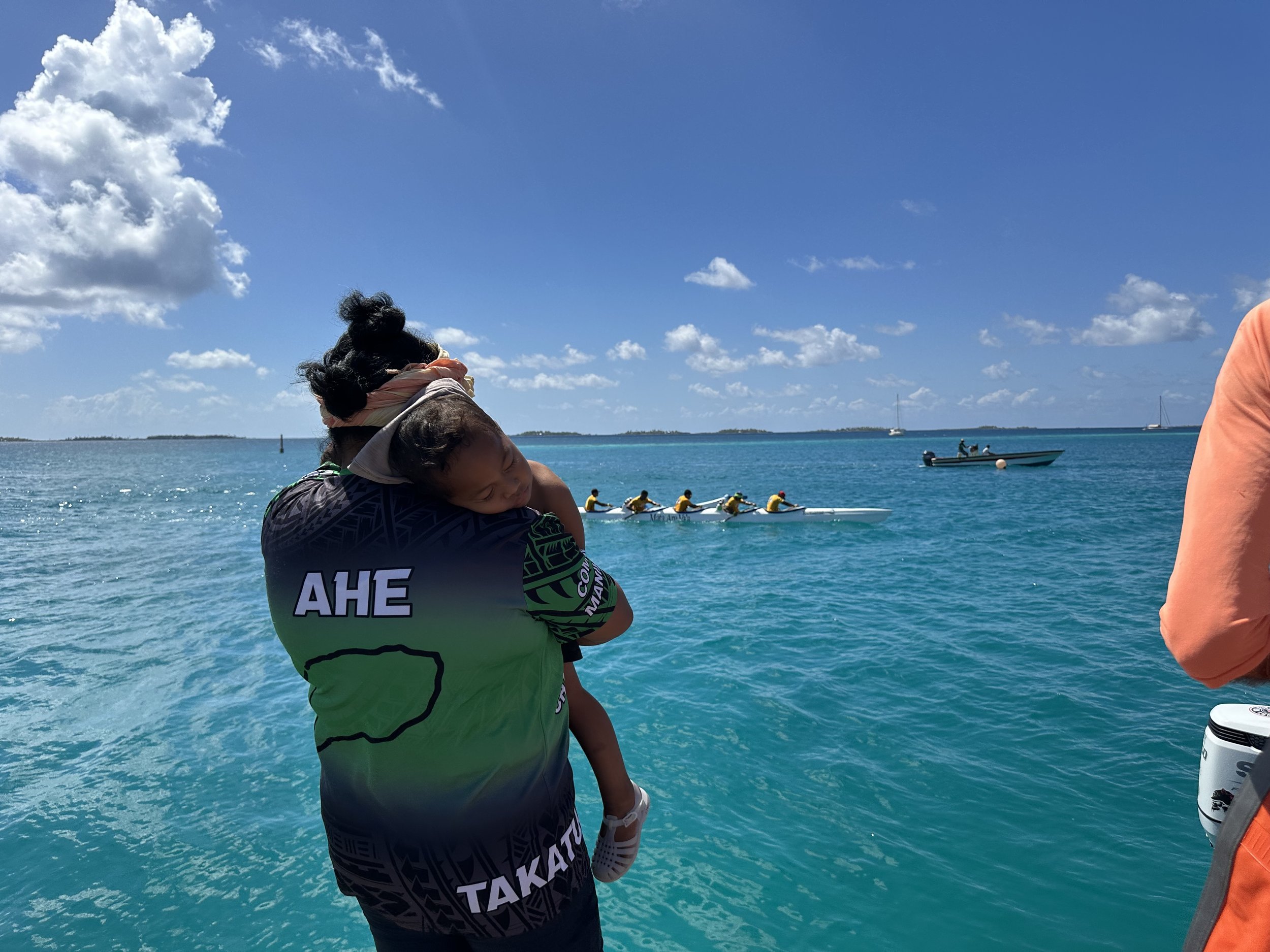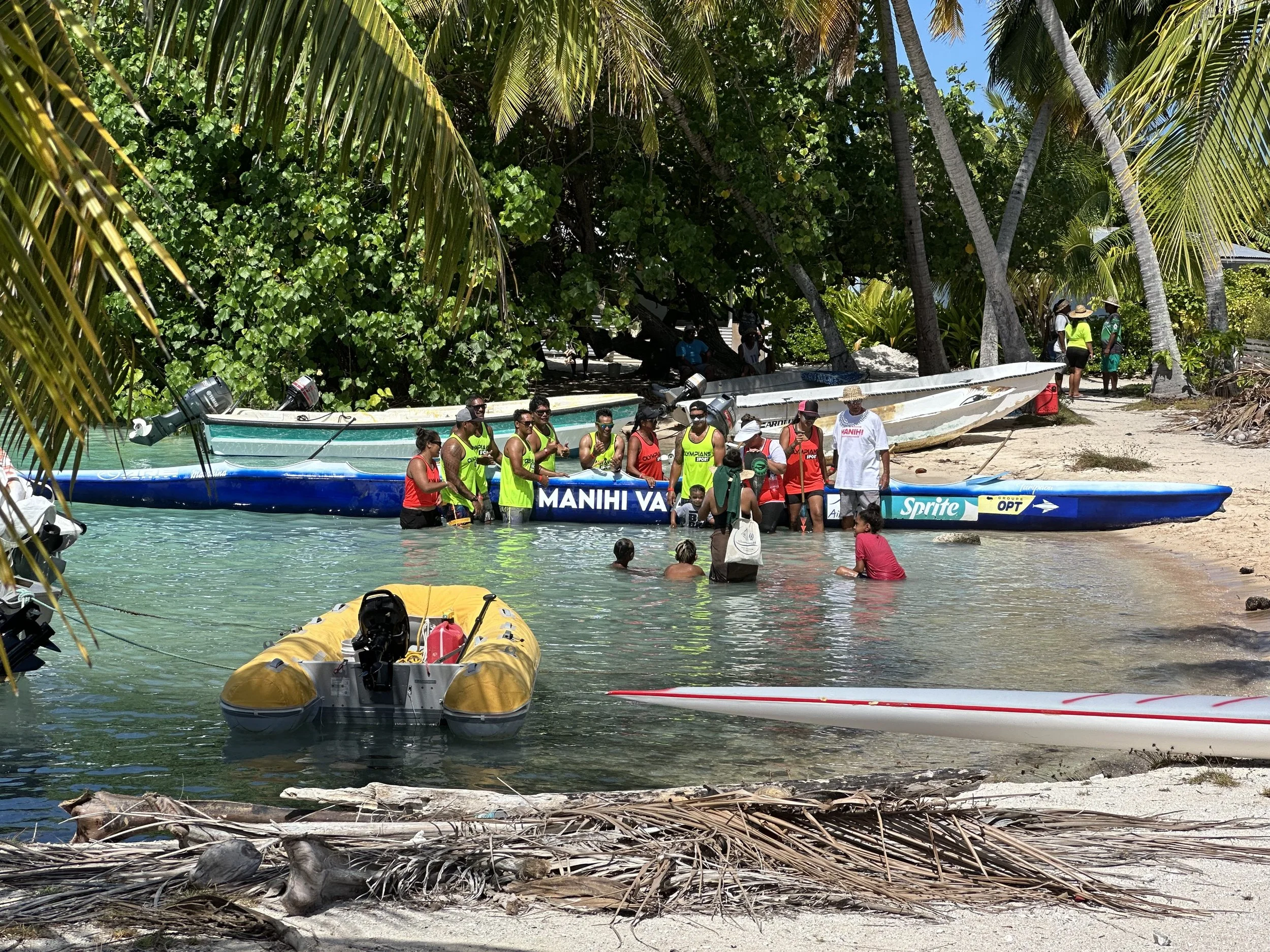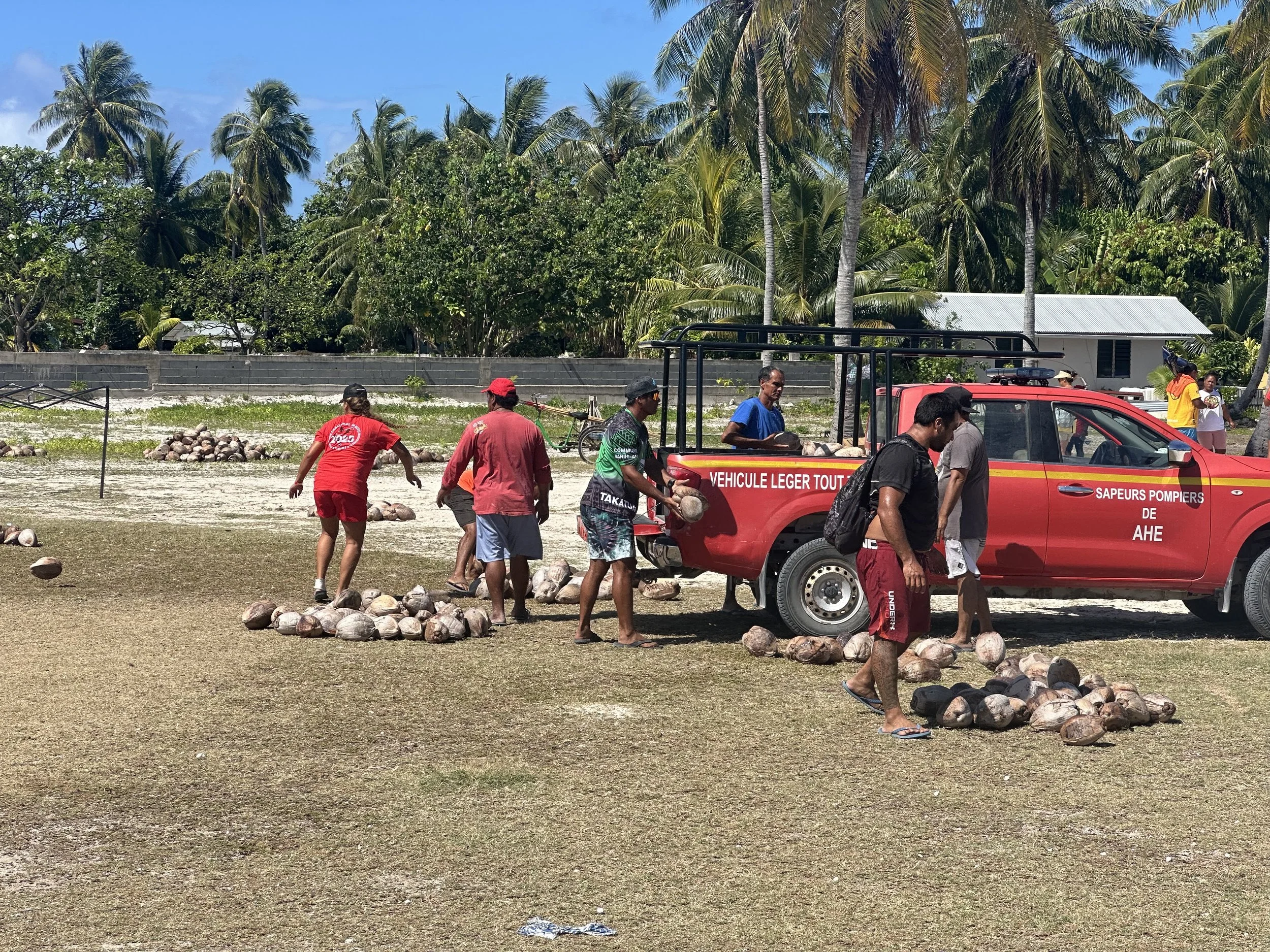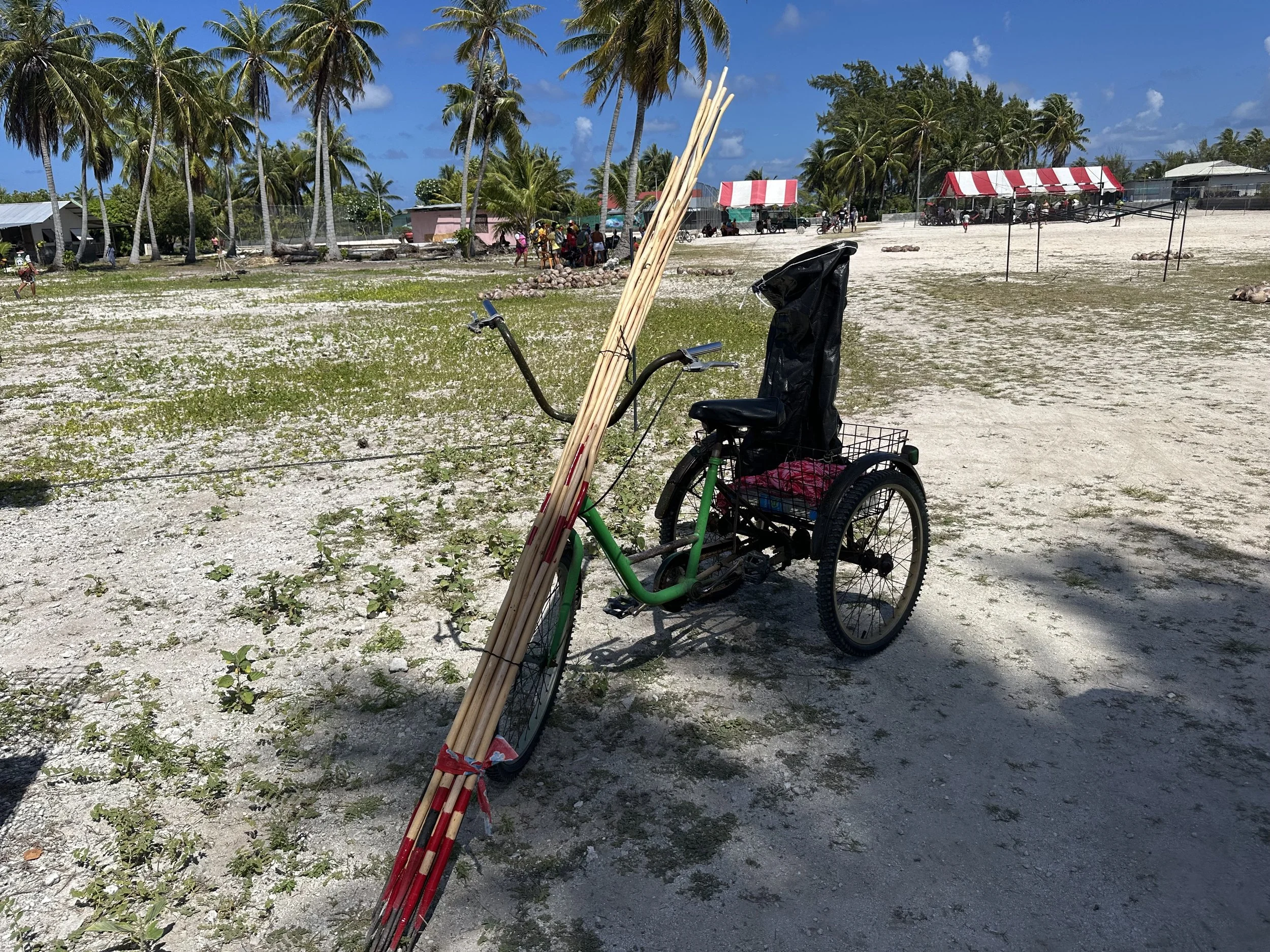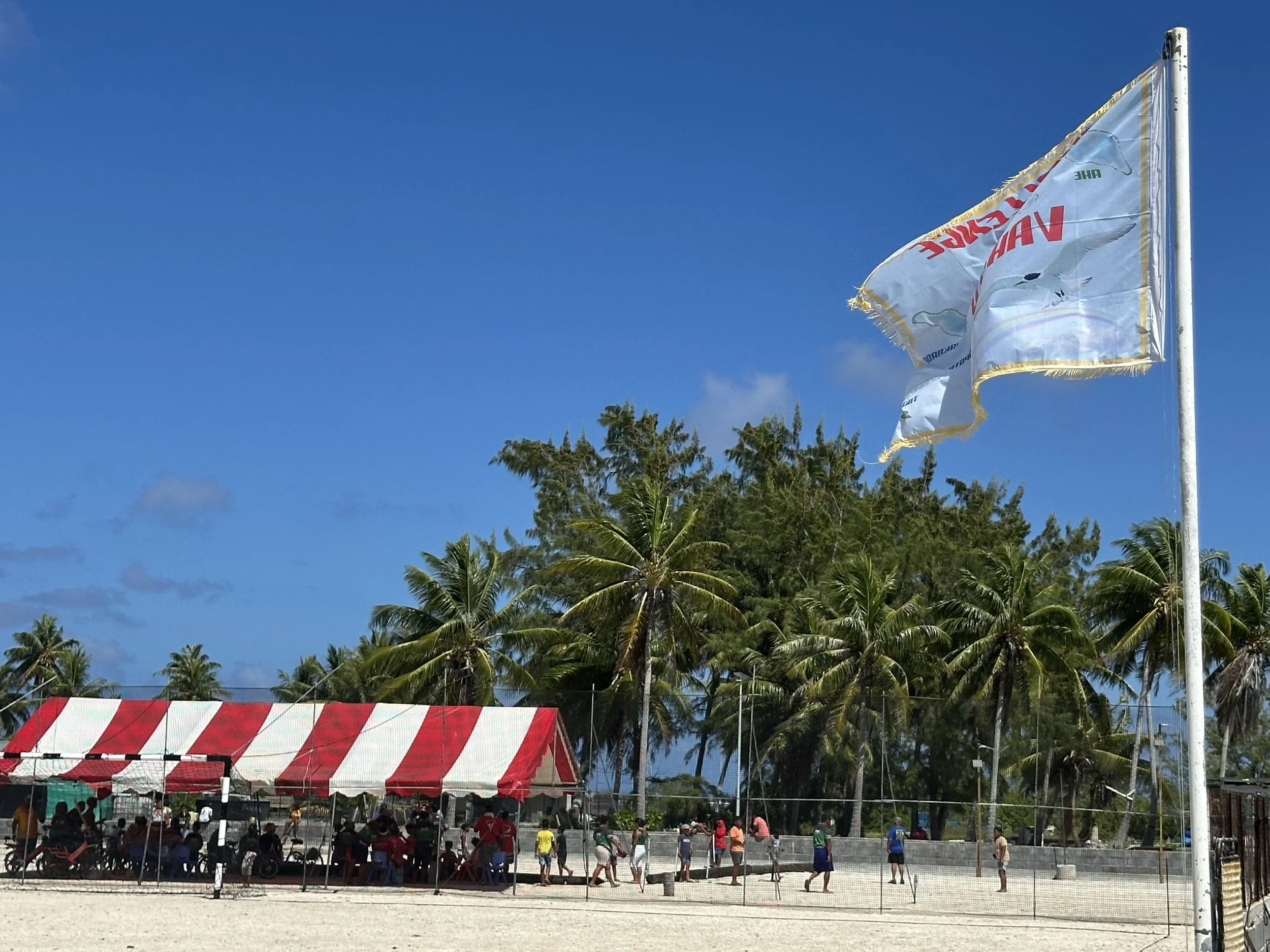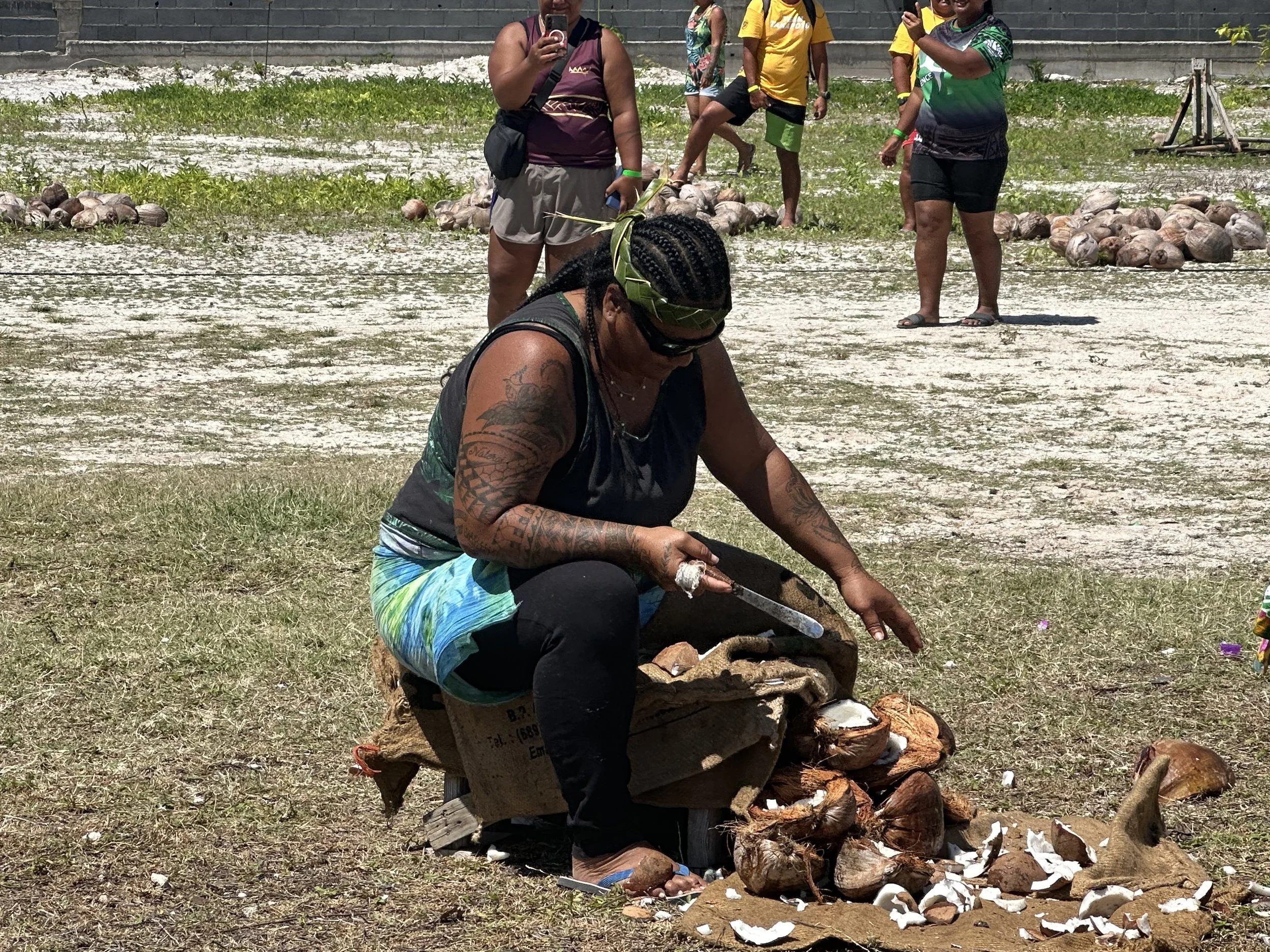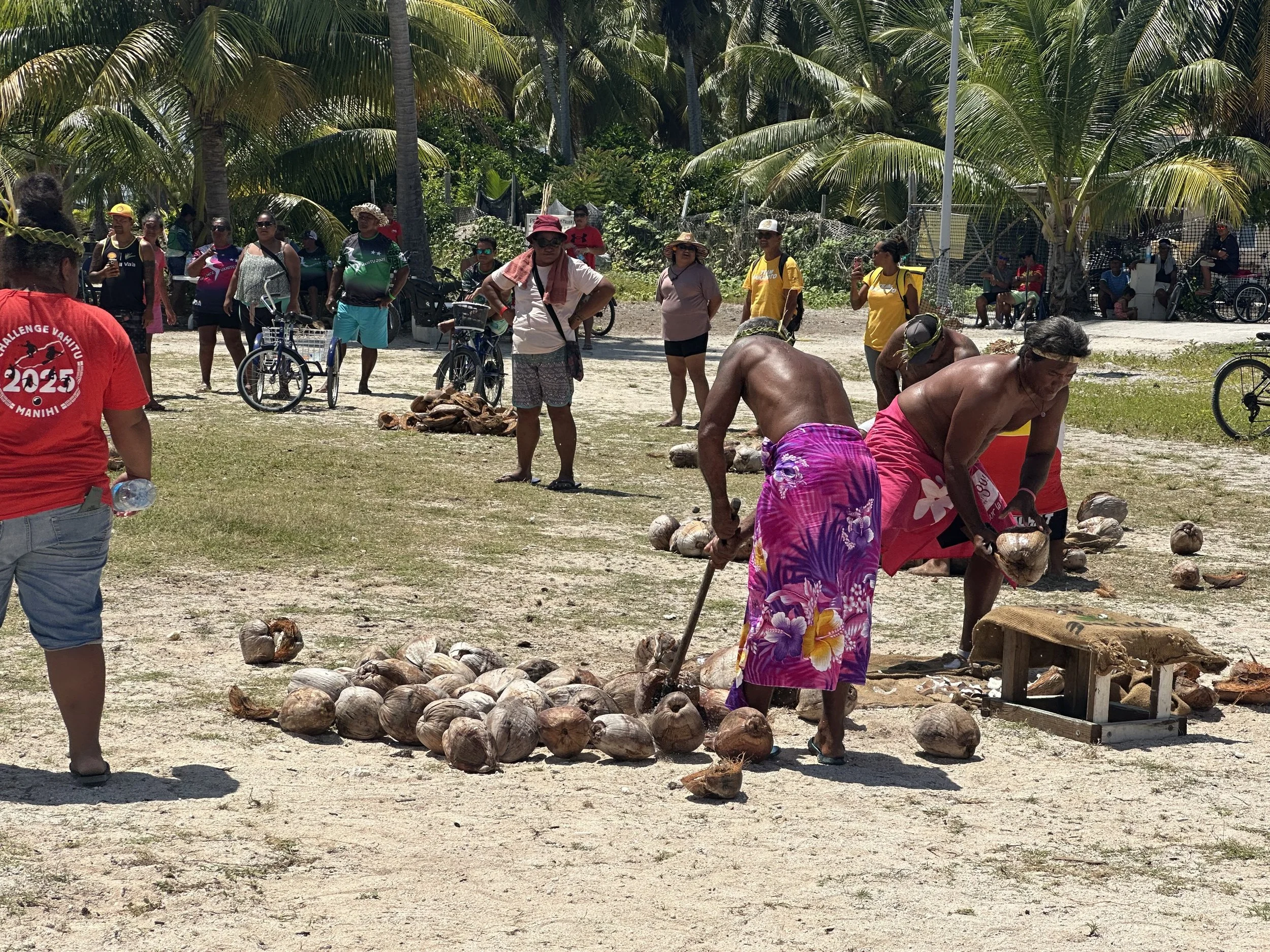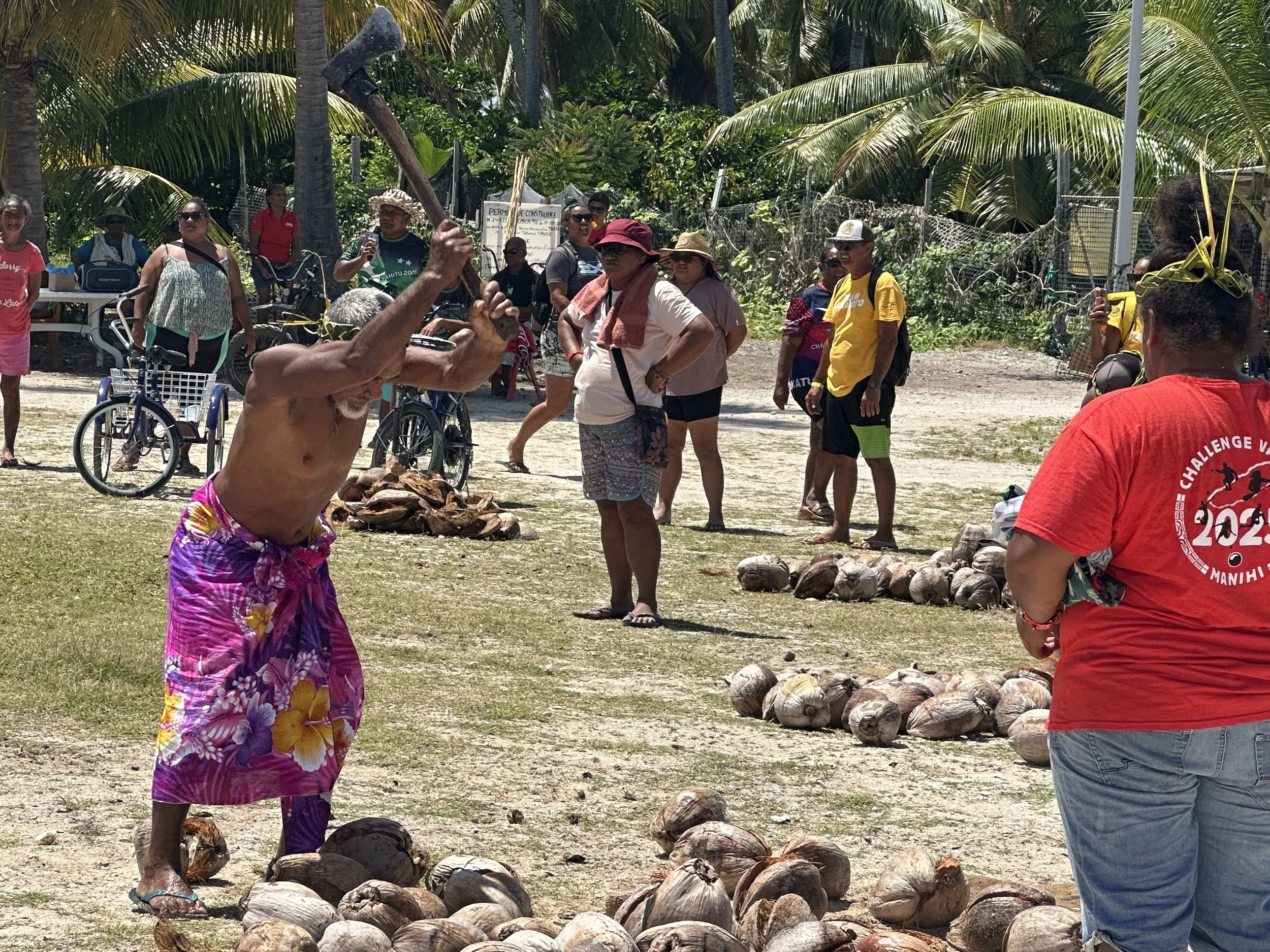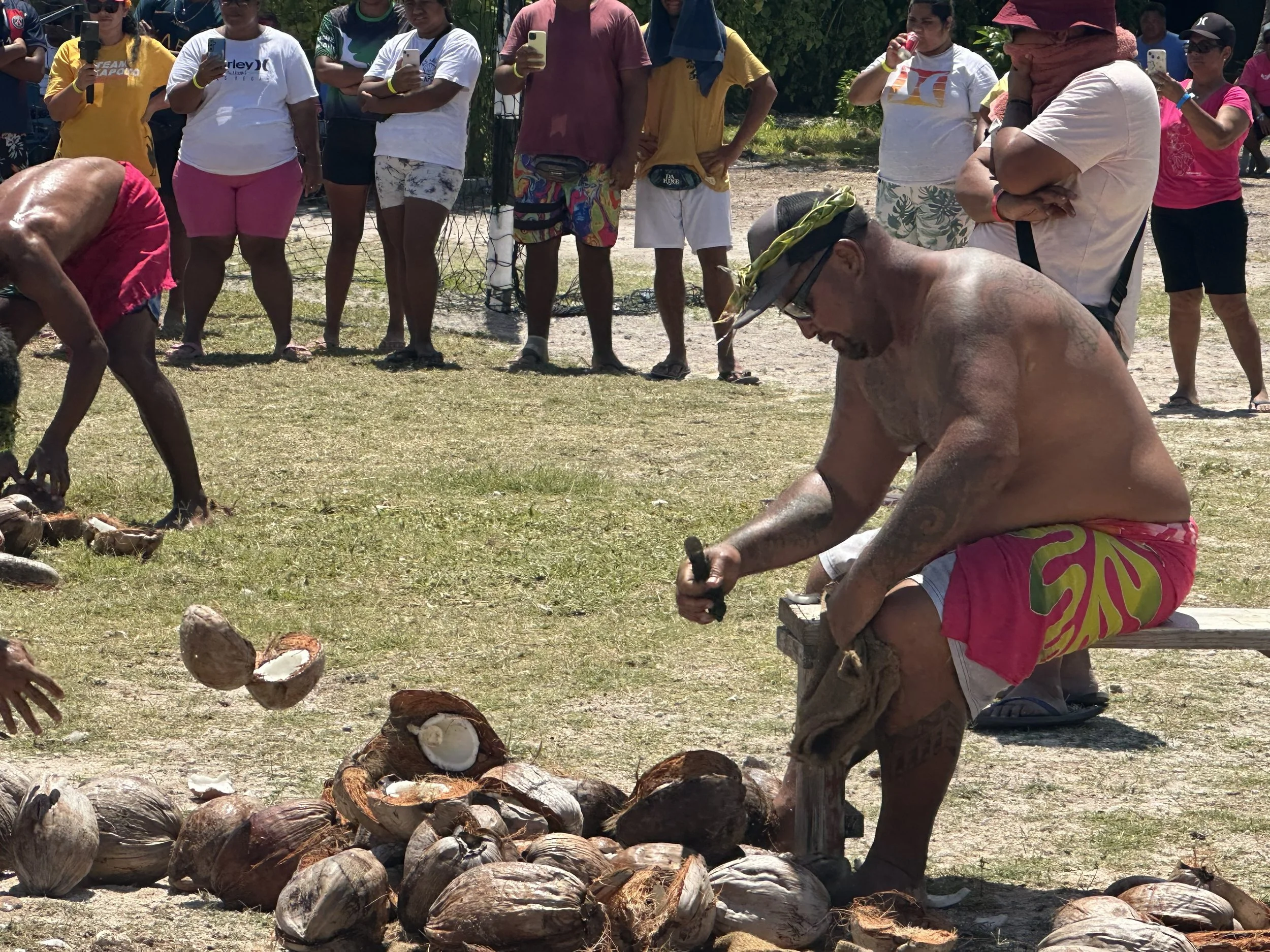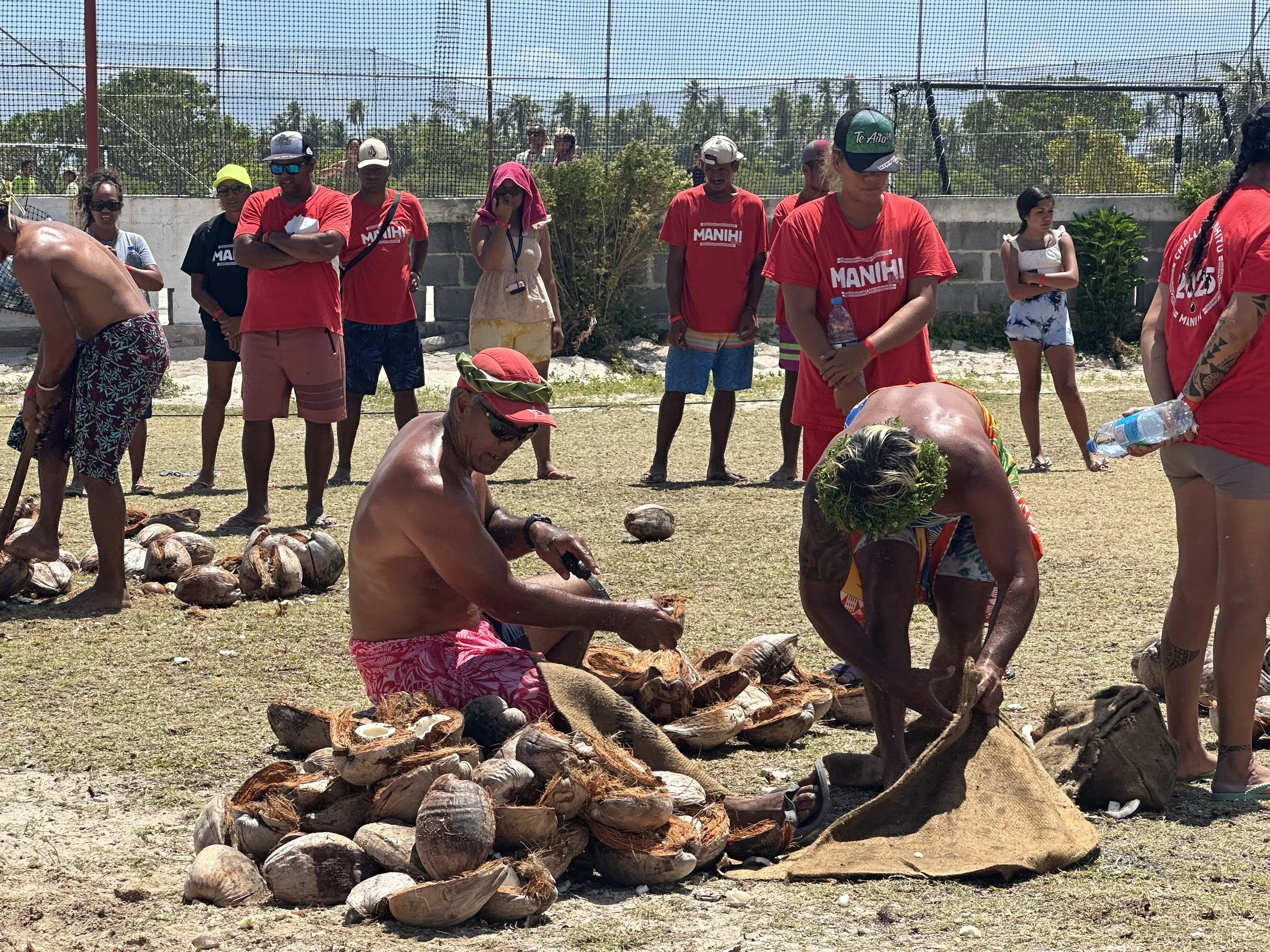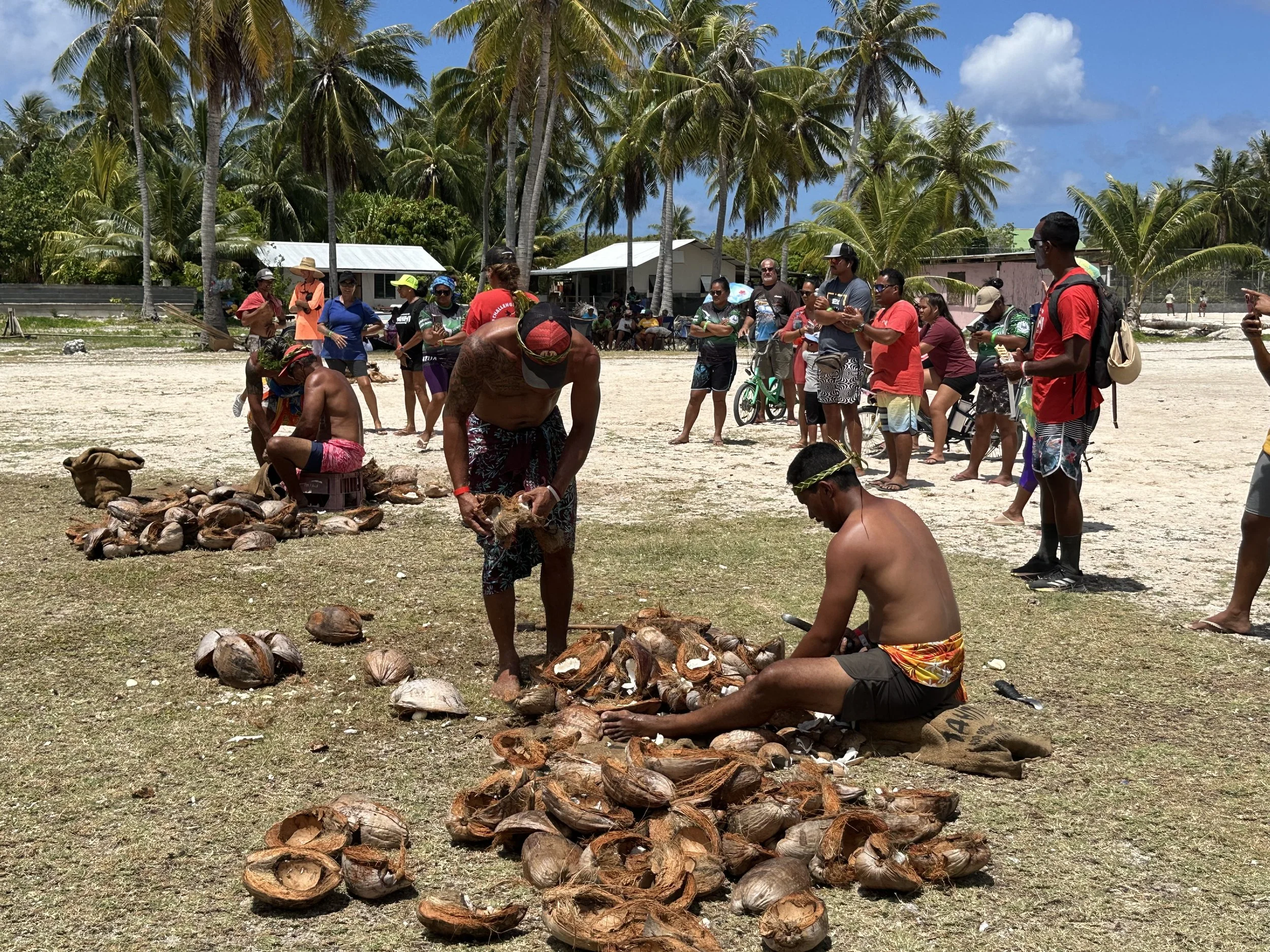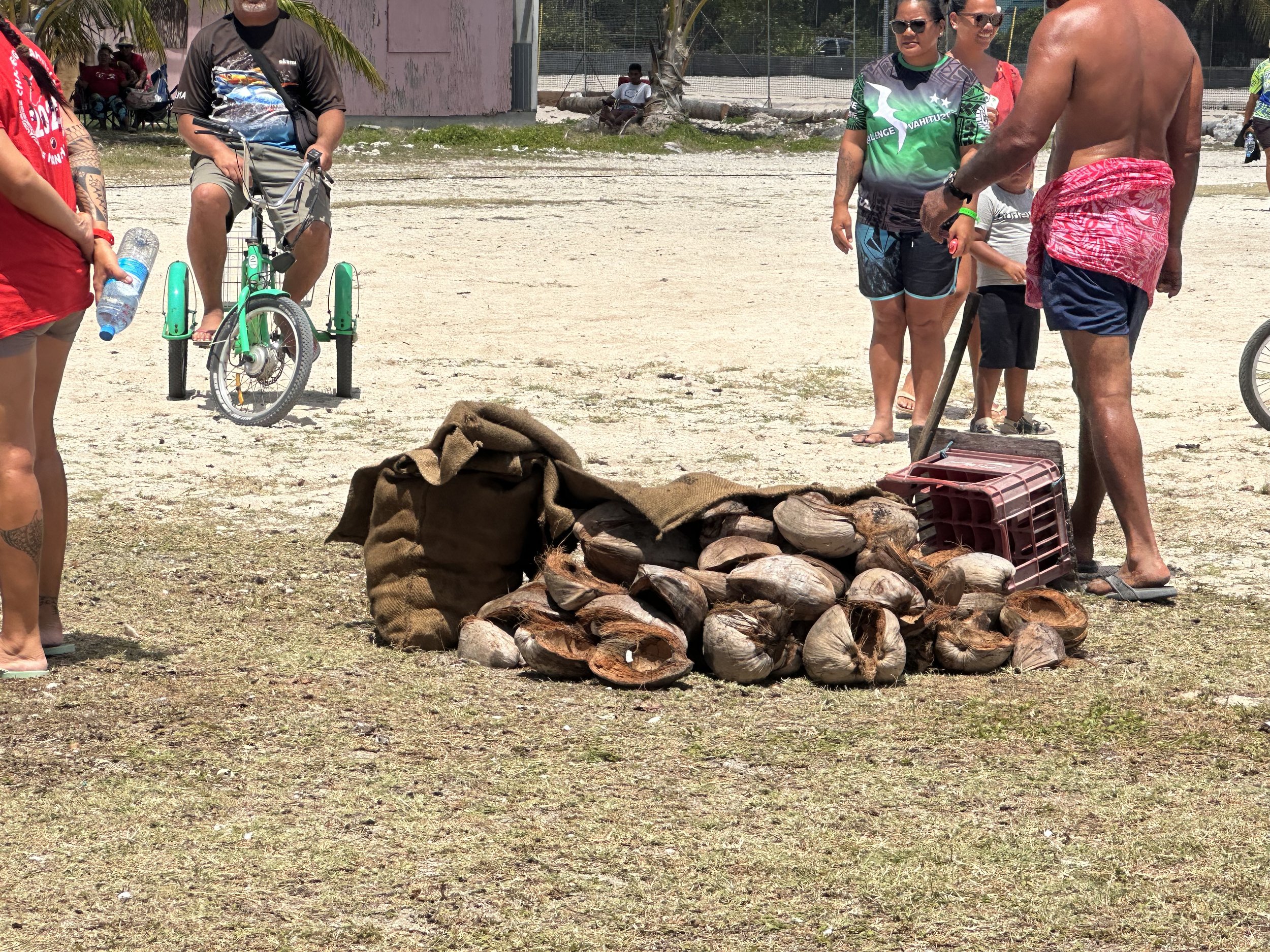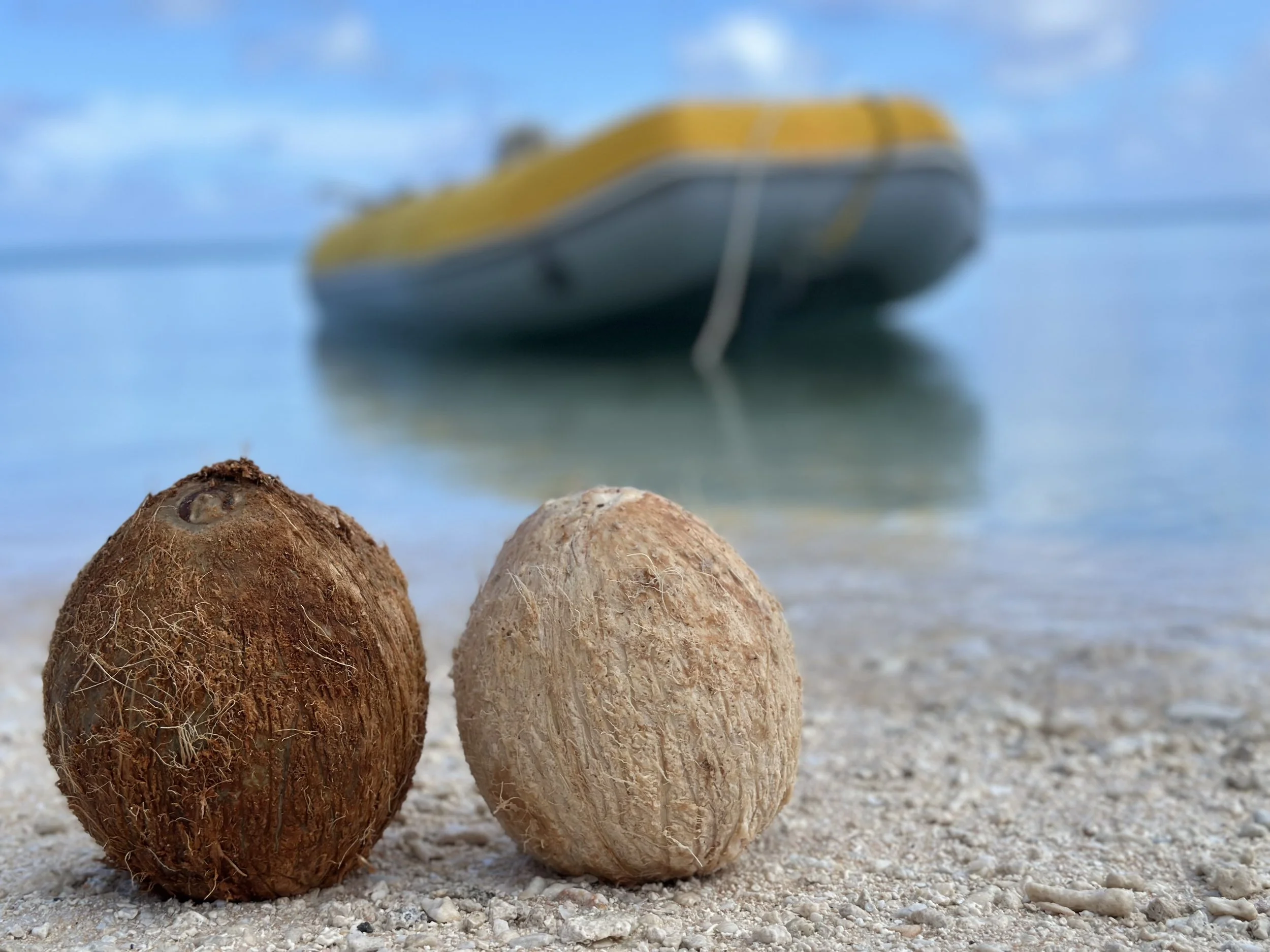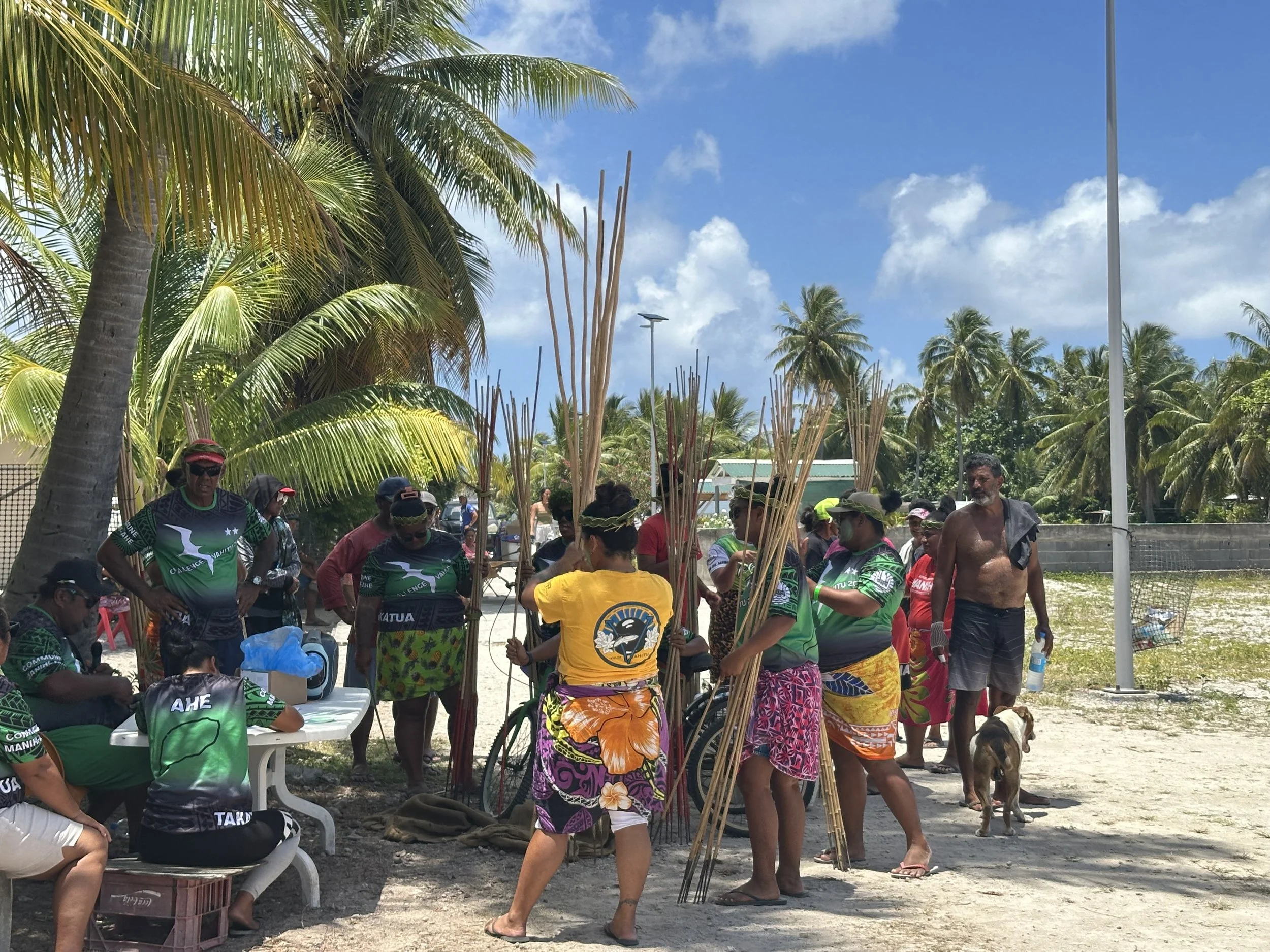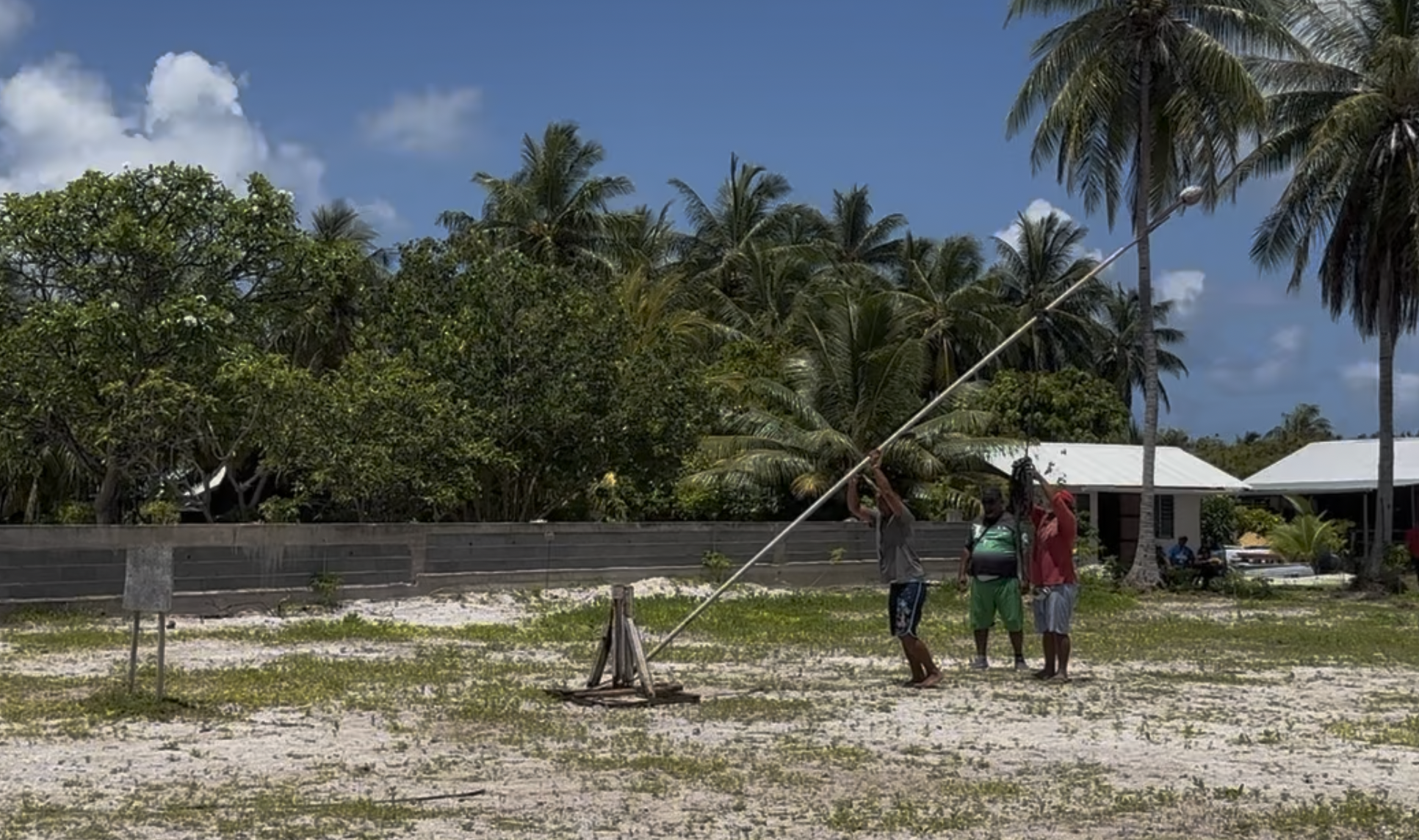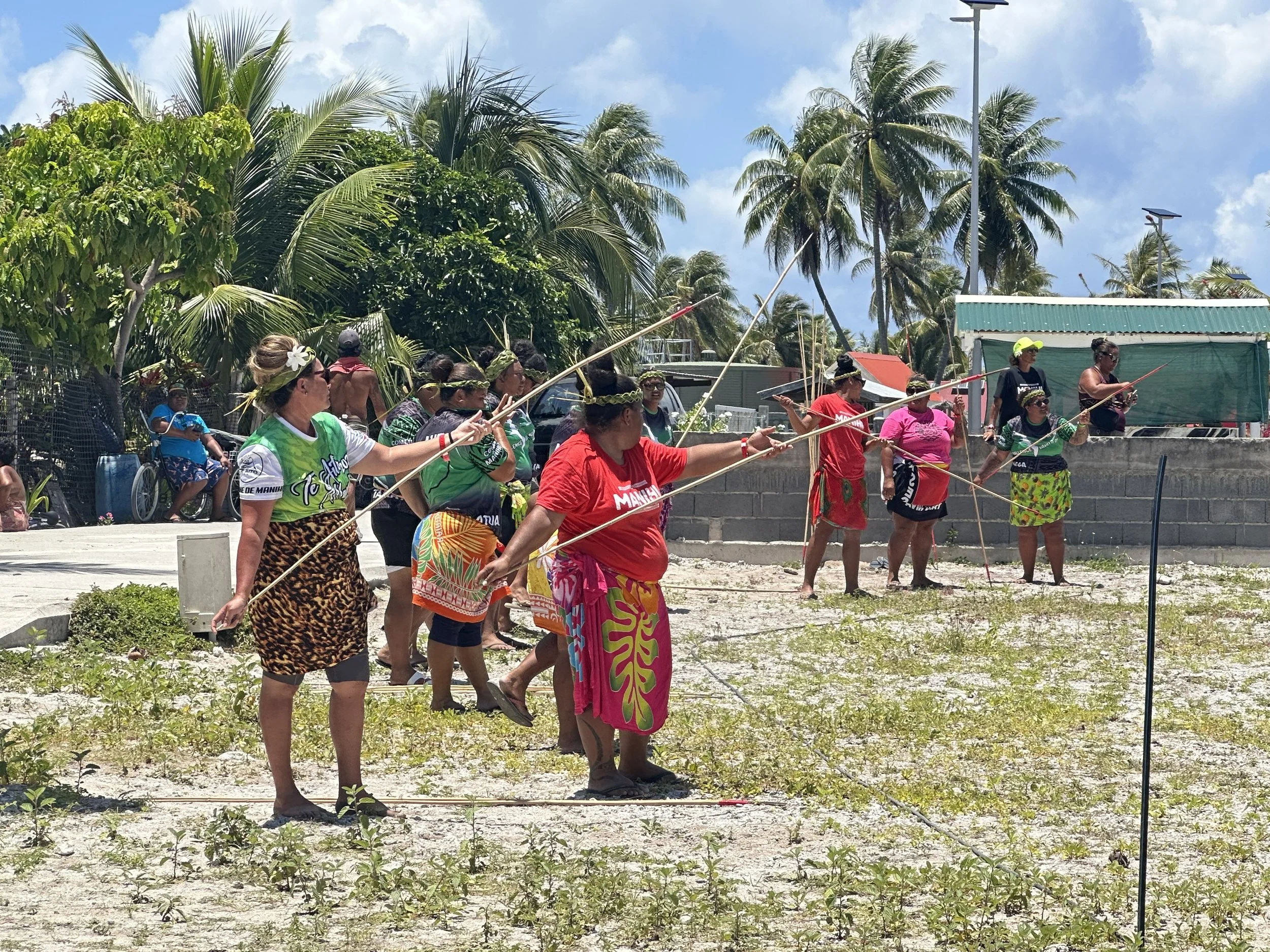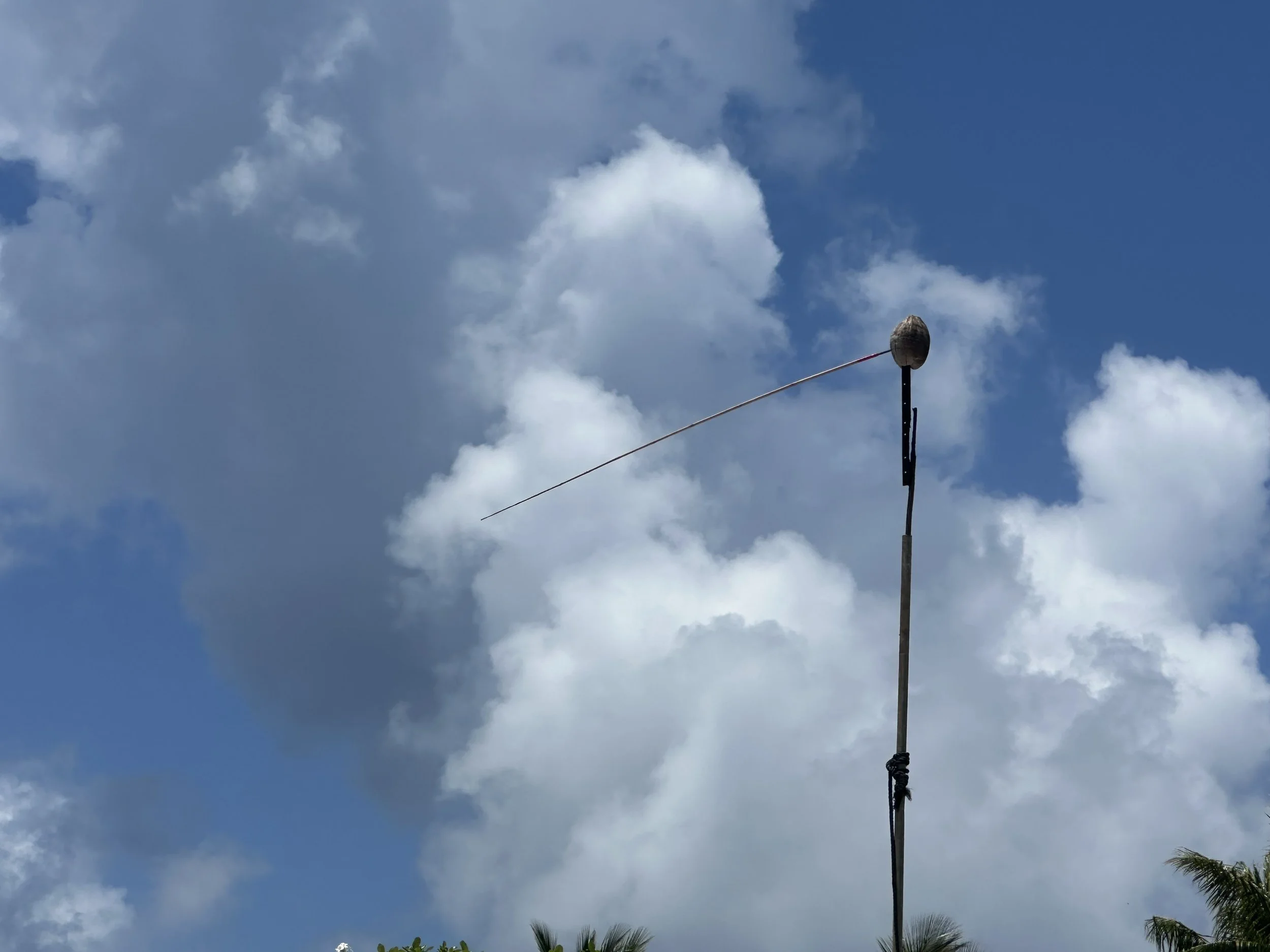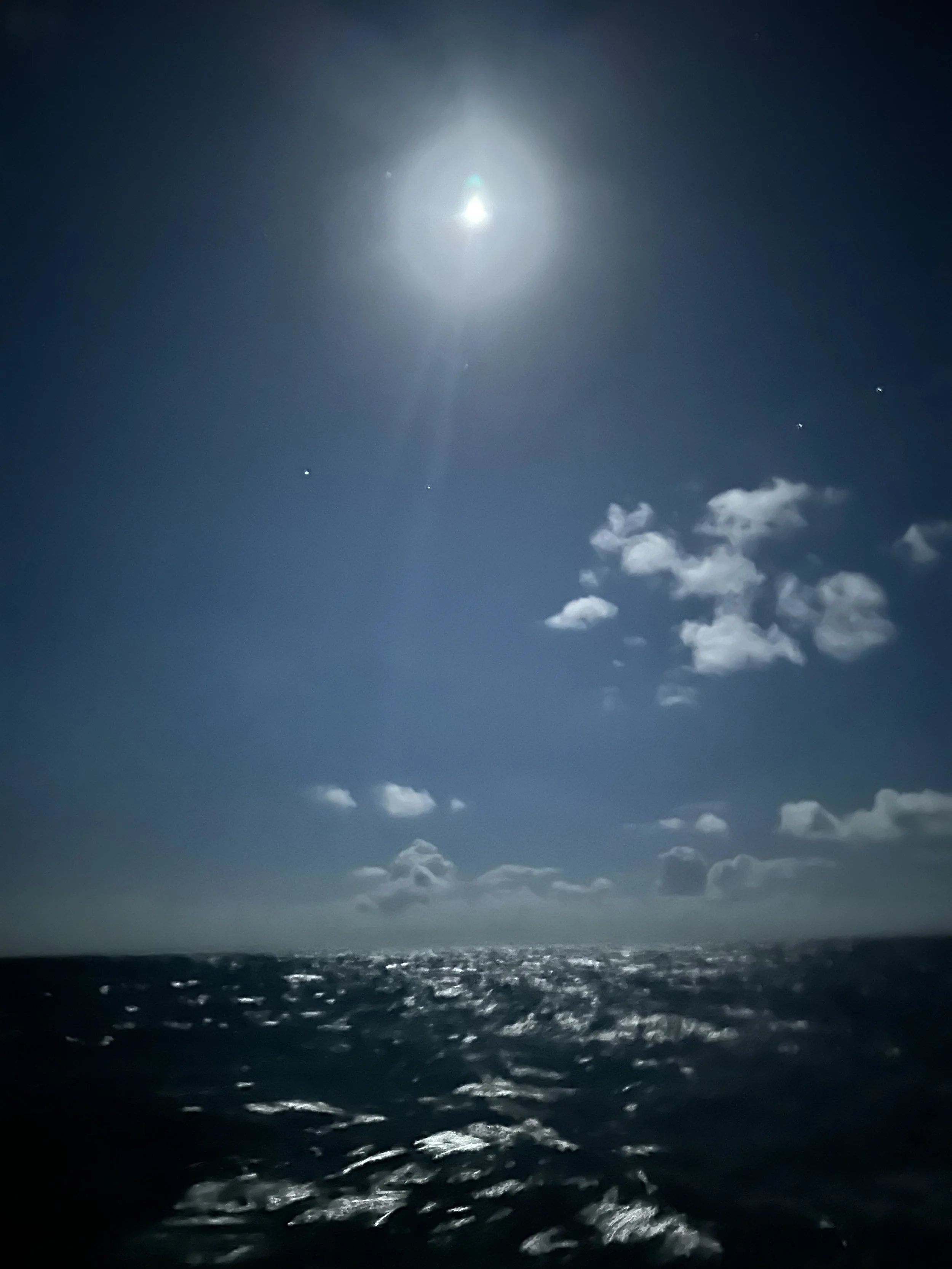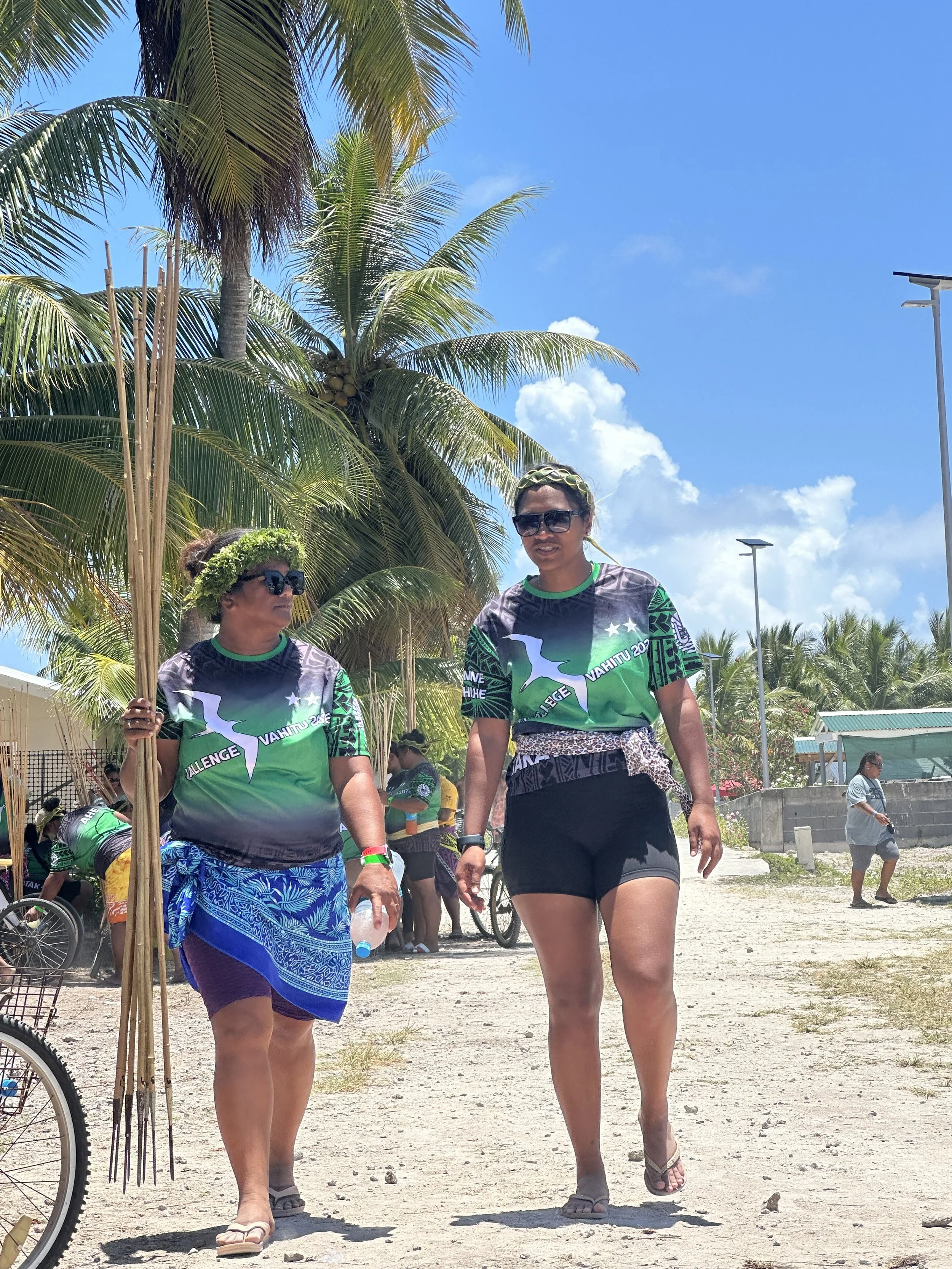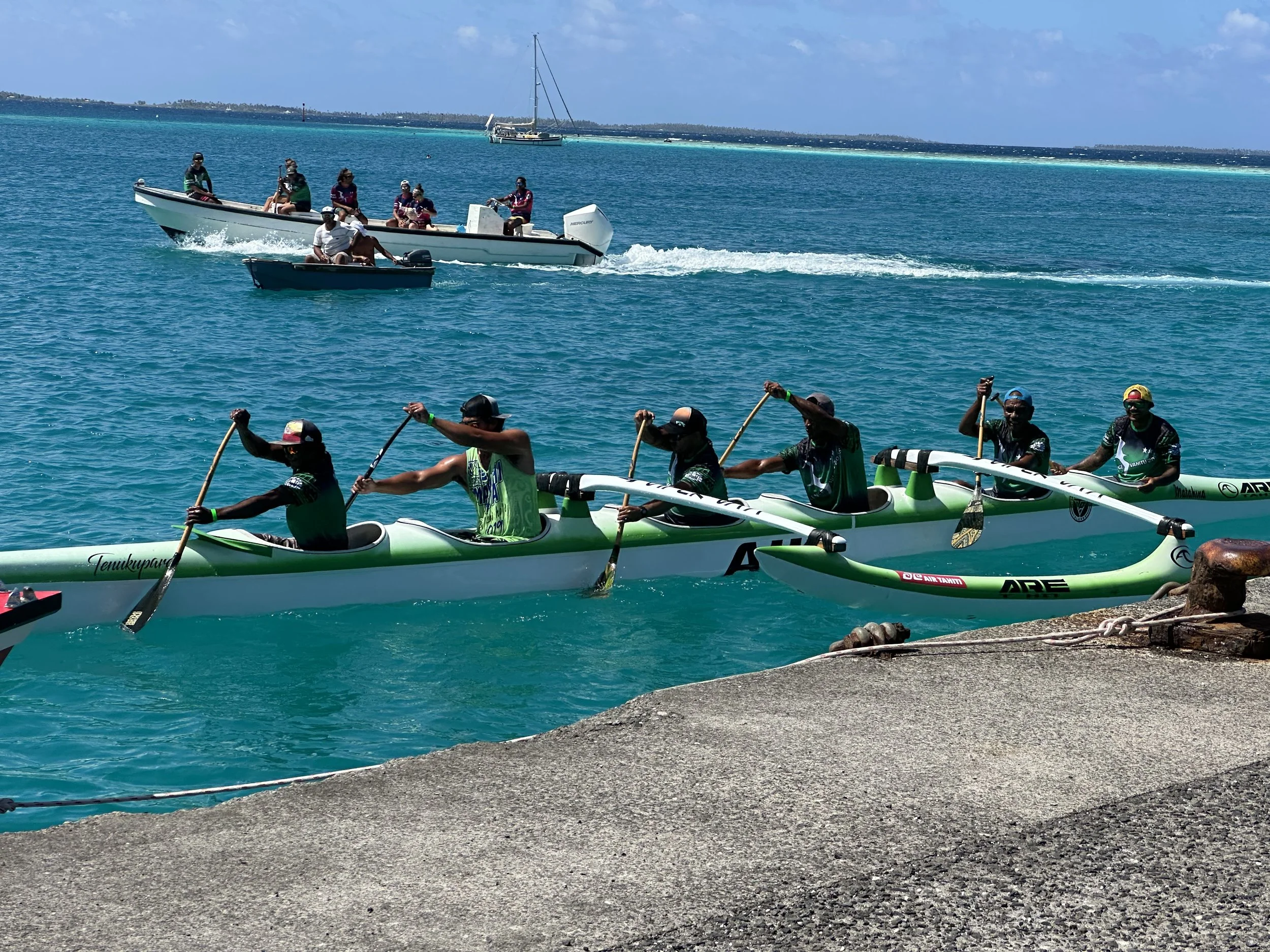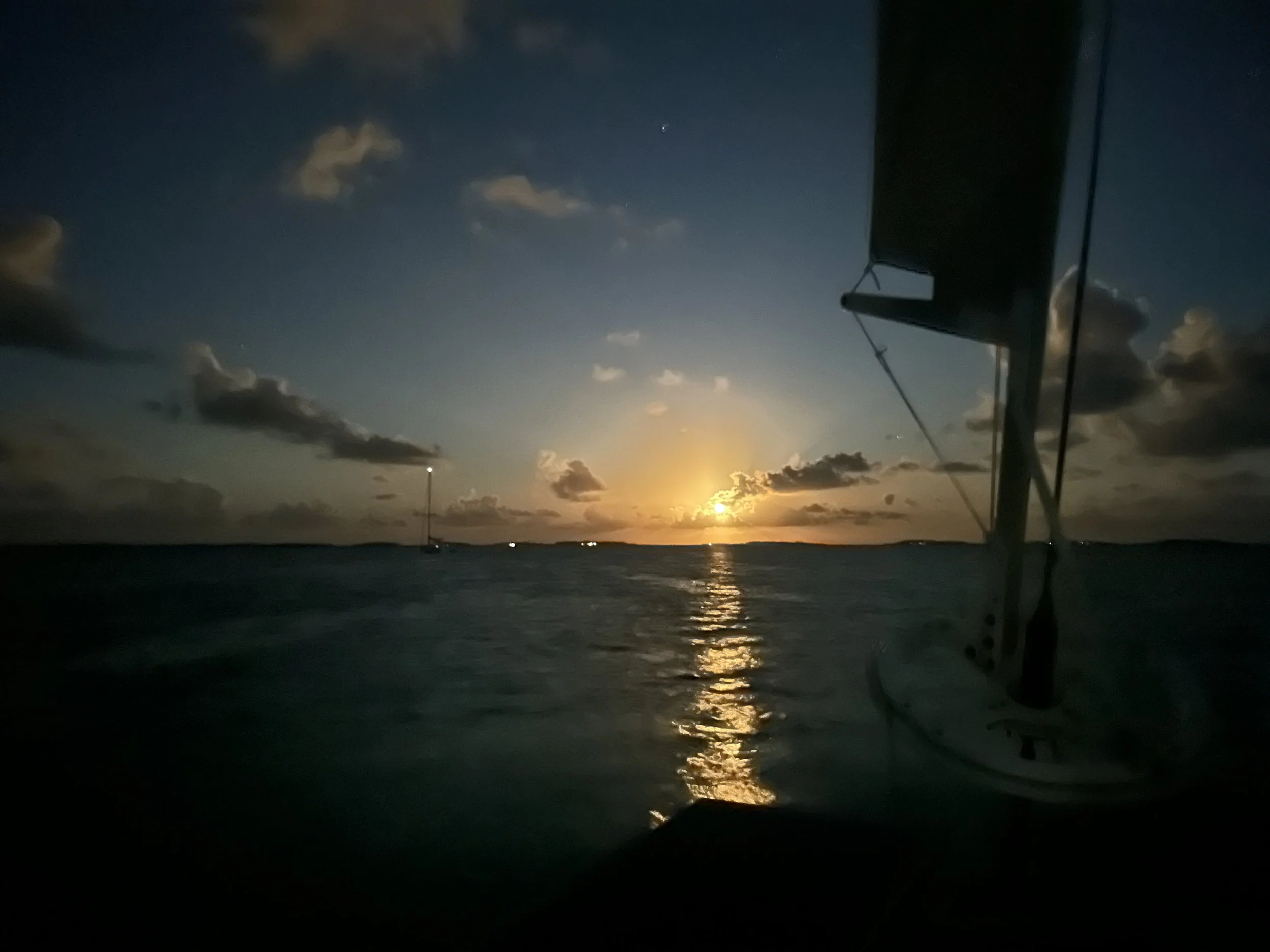Ahe and the Challenge Vahitu 2025
What do basketball, beach soccer, pirogue races, and a spear-throwing competition all have in common? They’re all part of the week-long, annual Challenge Vahitu that felt a bit like a Polynesian version of ancient Olympic games. This year, it was held in Ahe, and by serendipitous magic, we happened to be there for it.
The flag of the games, hoisted high
Ahe is atoll number 10 for us. We’d come for a couple of reasons, one of which is that Jeremy had listened to a podcast by a woman who had started a pearl farm there with her then-partner; another is that we love going places off the beaten track. Moitessier had lived on Ahe for a while. And, honestly? We were STILL on the hunt for beer after striking out with 3 ships and 2 stores in Fakarava.
Ahe. Image from Nasa
Referred to as the King George Islands in this map, the atolls of Takaroa, Takapoto, Tikei, Manihi, and Ahe are in Paumuto language called the Vahitu. And once a year, in an alternating hosting pattern, people representing each atoll congregate to compete in a variety of sporting events. Some of these are pure games - basketball, volleyball, pétanque - while others (copra production contest, pirogue races) appear to have roots in practical application.
Vahitu group in the Tuamotus
We’d made our way to the Mairie to pay our visitors’ tax (there is none levied here) after a few days of being anchored in the town basin and a quick trip to an anchorage on the north side of the atoll. When we asked the helpful woman if there was anything special we ought to see while we were here, her eyes lit up. “It’s the challenge Vahitu starting on Monday and going all week,” she said. “Three hundred people from the nearby islands are all coming.”
Three HUNDRED? “How many people live here usually?” “Around five hundred.”
This explained the overloaded boat we’d seen coming in towards the dock when we were walking toward the Mairie. It also explained the beehive of activity we’d seen on our first arrival, where there were groups of people clearing brush or working on the soccer field. The basketball court and pétanque pistes had fresh lines. We just figured this was a town with a strong sense of civic pride. Well, yes, there is that. But it’s also the big spruce up before honored guests arrive.
Direction tree
Ahe in general seemed to be more industrious than other places we’ve been, challenge aside. Boats buzzed constantly in the morning and evening commute times. Every time we went ashore, there were people in the streets raking or sweeping, moving energetically towards something. Most of the other towns have largely felt deserted no matter what time of day. This was very different. Even the scene when the Mareva Nui was at the dock was more intense than at Takaroa, though this time around we were there before the ship’s store opened for business. (In case you were wondering, we did get beer. Finally!)
Spy Jeremy in line? This is the line for the ship store!
The first concrete evidence of something massive about to happen was the pile of mattresses on the dock, all marked “COMMUNE DE MANIHI” and accompanied by a small mountain of massive cooking pots. Because as much fun as adding half again as many people to a small island is, they do have to sleep somewhere. Each atoll brings its own bedding, its own fans (because so many bodies means hot, even with a breeze and open windows), and (we never saw this but were told it happens) their own washing machines. Meals are eaten as a group in the largest communal space.
Those mattresses (this is about half of what came) came across 20 miles of open ocean in that boat.
Mattress closeup
Keep in mind that people are coming from their atolls, bringing all this stuff, across miles of open ocean, in open boats. Takaroa is 85 miles away from Ahe. This is not taking your minivan to the local basketball arena.
On our boat in the anchorage, we had front row seats to the va’aa (outrigger canoe/pirogue) races. Each atoll must bring their own boats, so sadly Takaroa sat this event out. For each event, the women went first and then the men. There were 6-person boats (called fa’aa or va’aa ono) and singles (fa’aa hoe, pronounced hoEH). Sprints and long distance races. The spectator boats were a scene among themselves.
Manihi and Ahe, battling it out at the finish.
Spectators of all ages. Calypso is off of the bow of the power boat
Ashore the basketball, volleyball, and beach soccer games elicited loud cheers and yells. We missed seeing any of the pétanque contests. Most nights, the lights on the fields were lit and cheers went late into the night.
Freshly painted basketball court
But the final day, Friday, was the crown. We’d been told the schedule by the person at the store the day before, so we knew to go in very promptly in the morning. The first event was the triathalon. Jump in off the dock by the boat ramp side, swim to the other side, and then pass off to the runner. The run was a short one - it had to be, since there’s only about 3 miles of road on the entire atoll. The final part? A fa’aa hoe long distance race, a triangle course that included a couple of government marks and what we suspect is a pearl farm buoy field.
Calypso’s dinghy, Roti, in the foreground with the va’aa ono from Manihi in the background
We grabbed our chairs, sunscreen, a bottle of water, and went in to spectate the final events of the week: copra production and the patia’f’a, or javelo in French.
The local fire truck brought in the coconuts
Coconuts awaiting processing
Spears resting on an “adult tricycle”, a common form of transport
Spectator tents near the petanque piste and soccer field
For these last events, the competitors had a dress code. Team shirt (or no shirt), a pareo for the bottom half, and a freshly woven coconut frond crown. The colors were incredible.
Ahe won the women’s contest
Copra is the dried flesh of coconuts. It’s the raw ingredient that coconut oil is pressed from, and the production of this is one of the main economic activities in these islands. Coconuts fall, dry out a bit, and then the work happens: each nut needs to be split and the interior meat removed. All of this is done by hand. Copra on the world market earns approximately $.54/kilo, or the equivalent of the meat from 8 coconuts.
Getting ready . . .
Each coconut is split
Split coconut mid-air en route to the pile to be cleaned
All the coconut meat needed to be put into the bags
Slight sense of the coconut destruction
Everything needed to be tidied up to be officially finished
You try to remove meat from a coconut and see how long it takes.
More coconut destruction
For these teams of 2, fully processing a pile of what looked like 30 coconuts took 11-12 minutes. Which would be worth what, $1.50? Split 2 ways? I won’t look at coconut oil quite the same way again.
I think it took us 15 minutes to deal with ONE coconut the first time we tried it.
Back in Katiu
The second contest of the day, the very last of the whole week, was the “fling a spear at a coconut” one. We asked the name of the event: javelo in French, or Patia’f’a in Paumotu, the Tuamotu language. Uniquely Polynesian according to a woman from Takapoto we’d talked to, this event totally piqued our interest. Each contestant has a collection of a dozen bamboo (or other kind of spindly wood) sticks with a spear tip attached. A coconut has been impaled on a 30’ tall pole, which then gets levered up and supported by a wooden stand. A rough “stand behind this” limit is laid out using black polypropylene line, and when the timer starts each contestant has 4 minutes to send the spears into the air, aiming for the coconut. They’re all doing this at once. The volley into the air is astounding; the quiver of embedded spears into the ground beyond the pole is impressive as well. Spectators are advised to stay well back. At one point a dog wandered through the field, ignoring the yells and oblivious to the close calls as 6’ long arrows flew into the earth nearby.
Spear check-in station
Levering up the coconut target
Women take aim
Different techniques abound
Some of the spears actually hit their mark!
Bullseye!
Field of spears
By 1 pm, the games were over, and the first boats were being loaded up to head back to wherever they came from. By 5 pm, we were headed out the pass, making our way to atoll #11.
Moonlit passage to Rangiroa
The Vahitu islands we visited - 4 of the 5 are inhabited, 3 of those 4 have passes allowing entry by a boat like ours, and 2 of them we actually visited - rank up there as our favorites in the Tuamotus so far.
Post competition stroll
Victory lap with spectator boats
If you’re lucky enough to be visiting the host atoll during that first week in November, definitely check it out!
Moonset from town anchorage, Ahe.



